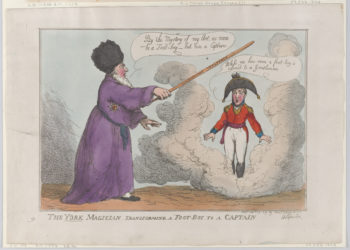The Charleston Library Conference is a favorite of mine for taking the pulse of academic libraries, collections, and scholarly publishing. For the past few years, I’ve presented at one or more preconference workshops and so haven’t had a chance to attend the Vendor Showcase. It was a delight, therefore, to spend the full-day at the Charleston Gaillard Center this year, immersed in conversation and checking out the current offerings. There is of course much more one could say about the conference programs themselves but today I want to share a few impressions on the vendor scene. Specifically, three observations about what I did see and one about what I did not.

AI Everywhere – Or, Is It?
Unsurprisingly, AI was the predominant theme. If something wasn’t “our new AI product,” it was AI-powered, AI-enhanced, AI-enabled, AI-driven, AI-supported, etc., etc., etc.! We are high on the hype cycle curve right now, particularly with respect to taglines, marketing, and positioning. What’s unclear though, is what all this AI actually is. Attempts to engage sales staff about what the AI does, how it operates, and why the particular approach was chosen over others got me answers like “it’s an algorithm” and “I’m not really sure but I can have someone follow up with you later.” Now, I appreciate the honesty. But, I also think this was a failure to take advantage of the opportunity to demonstrate that there is real added value from AI and educate customers about how the different approaches to AI will impact research and library collections and services.
Fully OA Publishers Turn to Pure Publish Agreements
Though Pure Publish Agreements have been available for a while now, the fully open access (OA) publishers are increasingly pitching institutional agreements to libraries. Framed as mechanisms for decreasing institutional costs (e.g., discounting list APC prices), increasing equity (e.g., all of an institution’s authors are covered not just those who can pay APCs), aligning spending with values (e.g., investing in full open access), and ensuring compliance (e.g., with OSTP and Plan S), the offerings are attempting to capture library spend and even the playing field with subscription publishers who have been able to use transformative agreements to maintain their market share in the transition from paywalled to open access publishing.
Subscribe to Open Transcendency
Subscribe to Open is on the rise. Learned societies and university presses in particular are leaning in to Subscribe to Open with the recently announced support for the model by Project MUSE, which already has 50 titles committed. There seems to be a sense that this is a no-fail model, which at some level it is, in the sense of preserving the paywall-publishing pathway. But, more than one person was surprised when I observed that this was also the year we saw S2O offerings fail to meet the sustainability thresholds. I think we are going to learn a lot about the application and sustainability of the S2O model in the coming two years, particularly as libraries face continued financial pressures of paying for open access publishing through transformative and pure publish agreements in times of declining budgets.
What Role for the Library with Research Integrity?
After attending the SSP conference earlier this year, where the topic of research integrity dominated the program, I was a bit surprised to see very little in the vendor showcase on research integrity. Are libraries not seen as campus players in ensuring research integrity infrastructure or are there just not many offerings in the market yet?
The danger of this sort of essay is that my experience of the Vendor Showcase is, of course, shaped by my own interests and may be idiosyncratic. I’d love to hear what others took away and the trends they are watching. I invite you to share your thoughts in the comments.
Discussion
14 Thoughts on "Observations from the Charleston Vendor Showcase"
Thank you for these observations, Lisa. I also felt keenly at the Charleston Vendor Showcase the tension between publisher enthusiasm for Subscribe to Open approaches (over 270 registrants for a pre-conference the same day as the Showcase) and individual conversations during the rest of the conference with library collection development officers. These budget stewards felt overwhelmed by the number of S2O offers and skeptical that all currently subscribing institutions could justify long-term support for a resource that others would be getting for free. As the University of Michigan Press runs a Subscribe to Open type book collection (UMP EBC Fund to Mission), I left the meeting with a keen sense that we need to find ways of increasing the direct value that we offer to supporting libraries and also cannot rely on just library dollars to support our open access ambitions. There remains a role for author-side support where institutions can pay, especially since BPC/APC money generally does not come from the library’s budget in my experience.
I would suggest that in future a mixed model of funding open access based on asking the question, “who benefits from this research being made open access?” would be more successful than relying on any one model. I see no reason why funders, professional associations, governments, learned societies and other interested parties shouldn’t all be involved in funding open access to research that they will all benefit from. I could see Open Access crowdfunding platforms involving S20, direct contributions, sponsorship etc. elements providing a solution to many funding gaps.
In theory, that sounds good. But, in reality, for a given publication, some of these models functionally preclude others.
I think this is right, Phil. In the book space, the benefits of OA to various potential funders are different and complementary. For example, the Provost benefits when their faculty member publishes *a specific title* OA (or non-OA) because it demonstrates that scholar’s quality and productivity – so it benefits their office to contribute to OA costs. A Collection Development Officer in the library benefits from a *collection* of books being published OA, because it advances the value of equitable access and reduces friction for patrons – so it benefits their library to contribute to OA costs. If the Provost and Collection Development Officer are at the same institution, it could look like the Publisher is double-dipping. But is that really the case if the money comes from different parts of the institution and is motivated by different expectations of benefits?
I think a challenge still is reflected in your first comment Charles. Why should a library (or other beneficiary of open access) pay for what they can get for free? And, longer term given the global geopolitical changes of late, I predict we’re going to see more questions about why the USA and Europe are subventing reading access for China, Russia, etc.
I would think that a library would pay to support open content because their purpose isn’t to acquire the maximum content for the minimum spend but to make information resources available to their users and in many cases there is also a library commitment to open access/open research. Coincidentally, collectively supporting open content also achieves the goal of acquiring the maximum content with the minimum spend given that it is paid for once at publication rather than by each library seeking to acquire the content post-publication at a full or partially-discounted price.
This is a good question, Lisa. It is also one continually raised by Rick Anderson in other SK posts – as he has noted while I was typing. Regarding the *direct* benefits for a library Collection Development Officer’s own institution of supporting an OA collection, I think of the following: (a) public services staff demonstrably appreciate DRM-free, unlimited multiuser book editions because they reduce patron access problems. OA goes even further to reducing friction; (b) there is some correlation (although not necessarily) between fewer rights restrictions on OA books and the opportunity to support the reuse of content supported by the library in OER or even text and data mining/LLM training; (c) for institutions involved in international education, OA reduces challenges for overseas students. And then I run out of direct benefits . . . Lots of indirect benefits of course, but I agree publishers need to be clearer on what S2O-type or membership approaches to OA “buys” a specific library. The continuing list of potential direct benefits shared here is helpful.
For what it’s worth, I wrote a longish post on this topic in the Kitchen a couple of years ago, and it generated a lot of discussion. The tl;dr version is: while librarian enthusiasm may keep S2O schemes afloat in the short run, the long-term viability of S2O depends on the sponsoring institution’s belief that underwriting OA is more important than the myriad other worthy things it could do with its funds.
My experience is within UK libraries but I don’t quite understand why the institution’s enthusiasm is likely to reduce over time or has much influence on a library’s spending compared to the library’s stated policies and collection management priorities (both of these are becoming more, not less focused on open access). Libraries make the decisions on how best to spend their budgets and this has little likelihood of becoming any less the case in future. Institutions in the UK at least seem to understand well that collective funding of open access publishing makes good budgetary sense as well as being good for Open Research and the global challenges it helps to address.
Phil, I think you are making a good case that in the UK, government and institutional priorities are aligned with library spending on OA. Academic libraries in the US aren’t functioning in such a regime. There’s no REF or block grants, the US has a public access not open access policy, and library funding is mostly allocated by the individual institution through an internal budgetary process.
Yes, any given library is allocated only so much to spend from their institution. They will balance across multiple priorities. If they get it wrong relative to institutional priorities, they will adjust or will likely have less to spend. It’s pretty straight forward political economy. The coming two years of S2O will be interesting.
Hi Lisa, Thanks for this great summary of key topics at Charleston! I’d like to drill in a bit on the research integrity topic. During the opening plenary session, on this topic, I believe I managed to ask Bar Veinstein, Judy Verses, and Frank Vrancken Peeters “What contributions would you like to see from libraries and universities?” I didn’t really note any specifics on that in their responses. And it has me wondering if anyone has compiled a “wishlist” of what academic libraries at research universities could do constructively to support research integrity.
It’s an interesting question, Roger, and one that I found strangely in harmony with other discussions on this comment thread. I will admit that I worry that pay-to-publish models are introducing incentives that actively promote the erosion of research integrity (for example, see what happened at Hindawi this year. I found the Clarke and Esposito team’s recap and analysis fascinating: https://www.ce-strategy.com/the-brief/not-so-special/, item 1, “Not So Special”). When there is a profit incentive to publishing as much as possible–to exponentially increasing publishing to the point where you no longer know who your editors or authors are–it seems inevitable that quality will suffer. The only gambit is to limit it (or hide it) enough to avoid a scandal, de-listing from major indexes, and a drop in stock price. Someone I trust recently heard from a journal editor (a scholar) in an Arts and Humanities discipline who was pressured to increase the number of articles published in their journal five- or sixfold and faced serious consequences when they argued that that kind of growth wasn’t feasible or healthy for the field. I worry that as libraries and institutions literally buy into pay to publish models, they could be actively supporting and rewarding these kinds of practices and entrenching systems that further undermine research integrity.
My issue with S2O models is that if aligned to previous subscription spends, previous inequitable pricing distribution continues. S20 should really be aligned to publishing volume not previous spend (though that redistribution can then cause issues faced with increases – especially if they can get it for free)



